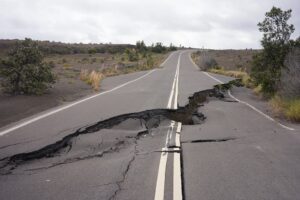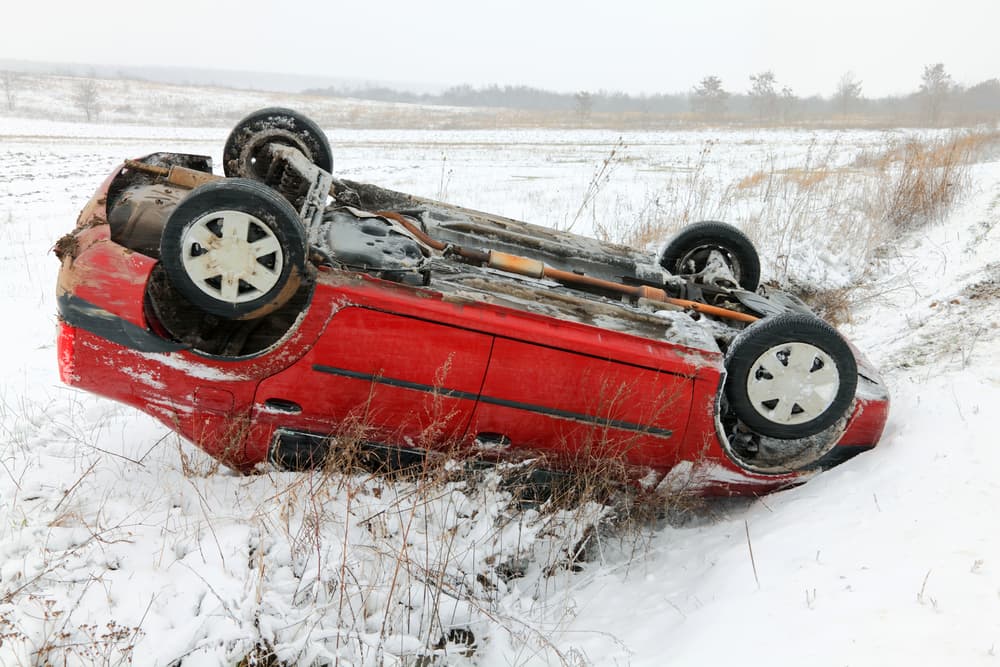When you suffer injuries in a crash, the costs and effects on your life can overwhelm you. But when someone causes your accident and injuries, the law holds them responsible for your losses. However, you must take many steps to seek the compensation you deserve.
Determining the cause of a collision is one of the most important steps of your claim for compensation. While certain causes, like driver negligence, are most often the reason accidents happen, other factors, like road hazards, can significantly contribute to a collision.
A car accident attorney can decipher whether a dangerous road condition caused your auto accident. If so, they can investigate to reveal who you may hold liable for your injuries and related losses to pursue fair compensation on your behalf.
Schedule a Free Initial Consultation Today!
What Kind of Road Hazards Contribute to Car Accidents?
Road hazards can make it particularly difficult to maneuver through roads and drive safely. The following are only some dangerous road conditions that most often result in collisions.

Poorly Designed Roads
Every road starts with a design. Engineers plan and design roads based on location and traffic. Unfortunately, some road designs are simply ineffective, making it more challenging than usual to navigate and avoid accidents.
When engineers design a road, they must keep safety and security in mind. They cannot make roads too narrow or the turns too sharp, and they need to install proper traffic control devices. A road that lacks proper planning is a hotspot for car accidents.
Lack of Road Maintenance
Roads don’t maintain themselves. Every road needs periodic maintenance to prevent significant hazards and fix issues that can cause collisions.
Generally, there are three types of road maintenance: preventative maintenance, reactive maintenance, and emergency maintenance.
Preventative road maintenance reduces accidents or more extensive road work. It aids in keeping traffic flowing smoothly and minimizing avoidable risks.
Reactive maintenance solves a problem. Repairing a bridge is one of the most common types of reactive maintenance, as bridges naturally deteriorate over time and need repair to avoid greater issues. Reactive maintenance can cost taxpayers millions, but failing to address a road problem can cause greater trouble.
Roads require emergency maintenance when something unexpected impacts road conditions, like severe weather. Emergency situations can significantly affect driver safety and increase the chances of accidents if not addressed right away. Road maintenance services usually work with local authorities for support during this type of maintenance.
Road Debris
“Road debris” can encompass everything from fallen branches and trees after a storm to random objects that fall out of cars and trucks as they drive down the street. Liability for accidents caused by road debris depends on the type of debris and how it got on the road.
Road Construction and Work Zones
Construction and road work are unavoidable and necessary. Still, workers must put up proper signals to warn drivers and help prevent collisions. Failure to take proper precautions can not only put drivers at risk of accidents but also make it easier for workers to get hurt while on the job.
Potholes and Sinkholes
Potholes and sinkholes naturally form over time. A pothole is a depression in the asphalt caused by traffic chipping away broken pieces little by little over time. A sinkhole is also a type of depression in the road but is caused by water eroding underlying rock, creating damage beneath the road’s surface.
Both potholes and sinkholes can form over time. When these road issues are not fixed in the early stages, they can worsen and lead to severe road damage and accidents.
Weather-Related Road Hazards
No one has control over the weather. However, dangerous weather conditions can exacerbate certain road issues, creating a greater likelihood of auto accidents.
For example, snow and ice can make roads slippery and put drivers at risk of harm. For this reason, roads require proper care in anticipation of these weather conditions, and when snow falls and ice forms, crews should take care of roads right away to minimize hazards.
Missing Guardrails
Guardrails are a welcome and necessary addition to certain roads.
Guardrails keep drivers safely on the road when they veer and also prevent them from falling over when driving through mountains and other dangerous locations.
Median guardrails can ensure drivers remain on the proper side of the road and avoid wrong-way accidents. In a collision, guardrails on either side of the road can keep vehicles from going too far after impact.
Low Shoulders
The shoulder of the road is the area to the right of a road that gives drivers enough space to stop if necessary. A significant dropoff between the road and the shoulder can cause drivers to drive off the road or even roll over. Road construction and erosion can cause low shoulders.
Missing or Malfunctioning Road Signs and Lights
Road signs and lights maintain a healthy flow of traffic and prevent vehicle collisions. Improper signs and missing, defective, or malfunctioning lights can confuse drivers and encourage dangerous driving behaviors that can result in accidents.
Other Factors That Contribute to Dangerous Road Car Accidents
Road hazards are often enough to cause a car accident. Nonetheless, other factors can substantially increase the chances of a crash when combined with dangerous road conditions.
Driver Negligence
Driving comes with a certain responsibility. Drivers have a duty to drive safely to keep themselves and others on the road free from harm. When they breach this legal duty, car accidents are more likely.
Some of the common negligent actions that result in auto collisions include:
- Speeding
- Tailgating
- Brake checking
- Weaving in and out of traffic lanes
- Failure
- Fatigued driving
- Driving under the influence
- Distracted driving
Some road conditions require drivers to adapt their driving to maintain safety on the streets. For instance, rain storms can make certain roads more dangerous, meaning drivers should change their driving to match the conditions. If a driver speeds or drives while distracted, they can make an already risky situation even more hazardous for themselves and others on the road.
Product Defects
Cars are complicated machines. They have many moving parts that must work together to keep the vehicle in good, safe working order. When something goes wrong with the vehicle while driving down a hazardous road, this can be a recipe for disaster.
Defective brakes, steering, and tires, among many other things, can easily cause a driver to lose total control over their vehicle. Dangerous road conditions may trigger a defect or malfunction, leading to single or multi-car accidents.
Who’s Liable for a Collision Caused by Dangerous Road Conditions?

Liability is the bread and butter of your compensation claim. Successfully establishing liability is necessary to have a valid case and recover financially for your injuries and losses.
Figuring out who is responsible for your accident can be particularly challenging. First, you must determine what actually caused your accident. If it was a road hazard, what was it? Did anything else, like driver negligence, also contribute to your collision?
Once you answer the question of cause, liability will become much clearer.
Any of the following parties can be solely or partly to blame for your collision:
- The state or local government
- The highway authority
- Public entities
- Construction or maintenance companies
- Other drivers
- Product designers, manufacturers, and distributors
After you decipher who’s responsible for your accident, you can act appropriately against them for fair compensation.
Proving Liability for a Road Hazard Auto Accident
Establishing a party’s liability requires time and effort, especially if more than one party is at fault. You must determine what basis liability rests upon, whether negligence, intentional actions, or strict liability, and fulfill the requirements to show how the defendant is liable to you.
Car accidents most often arise due to negligence. A negligent party may fail to act in the same manner as a similarly situated party.
Proving negligence requires satisfying four important elements:
- Duty
- Breach
- Causation
- Damages
First, you must prove the liable party owed you a duty of care. For example, drivers owe others on the road a duty of care to drive responsibly to avoid causing accidents and injuries.
Once you’ve established the party owed you a duty of care, you must show how their actions (or inaction) resulted in a breach of this duty. Speeding can breach their duty.
Next, you must exhibit the relationship between the party's wrongdoing and your accident. A link between the two must show how the party’s act or omission directly caused your collision.
Finally, you must prove you suffered damages due to the party’s wrongdoings. You can provide proof of injuries and other monetary or non-monetary losses related to your accident.
Car accident attorneys have the skills and resources to show how the other party caused your collision and prove their financial liability.
Potential Damages for Road Hazard Accidents
Aside from getting the justice you deserve, seeking compensation is the primary objective of filing a claim against the at-fault party. Evaluating your damages and determining how much your case is worth will ensure you obtain the fairest possible settlement.
Your damages depend on the details of your case.
Depending on your injuries and the economic and non-economic impact of your collision, you may seek compensation for:
- Property damage
- Past and future medical expenses, including treatment, medication, and rehabilitation
- Lost earnings
- Diminished earning capacity
- Emotional distress
- Disability
- Pain and suffering
Several factors have a heavy impact on the value of your claim, including, but not limited to:
- The severity of your accident injuries
- The total cost of your medical treatment
- Whether you’ll require medical care in the future
- How your injuries have and will affect your life
- Whether you can work in the same capacity as you did pre-collision
- How your accident and injuries have affected you mentally
A car accident attorney can gather pertinent evidence to prove your losses and pursue monetary recovery on your behalf. A lawyer can significantly increase your chances of getting the best possible case result.
Time Is Limited to Seek Legal Guidance After a Road Hazard Car Accident

If dangerous road conditions cause a crash, you may seek compensation. Nevertheless, time is limited.
Your time to file your claim depends on your state’s laws. State laws generally allow between one to six years to take legal action for your accident. Seek legal representation as quickly as possible to get moving on your case.
When you place your road hazard accident case in a qualified personal injury attorney’s hand, you can rest assured that your case is in capable hands. A lawyer who has experience handling these types of cases has experience handling everything for your case promptly.
Protect your rights as an accident victim. Holding the at-fault party responsible for their wrongdoings will help you obtain the monetary recovery you need and deserve after a road hazard crash. Find an experienced attorney who can handle this process.